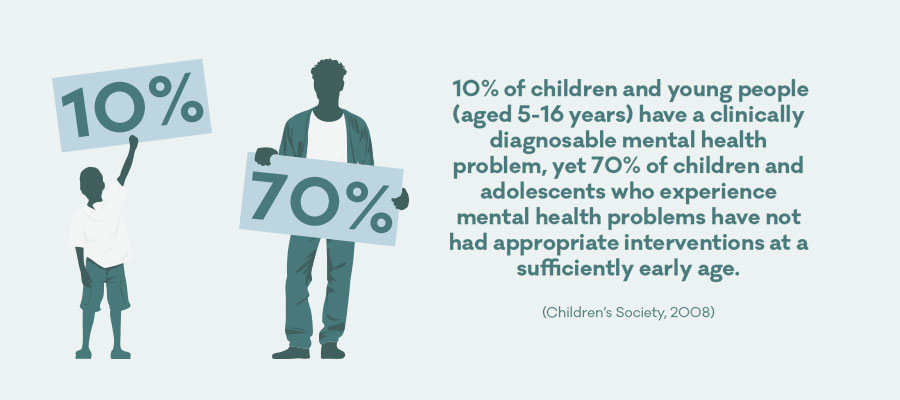
Mental Health in Schools
In today’s fast-paced world, mental health is more crucial than ever, especially in schools. As students navigate the challenges of academics, social interactions, and personal growth, prioritizing their well-being becomes essential. The school environment should not only focus on academic excellence but also nurture emotional resilience and mental stability. It’s time we recognize that a supportive atmosphere can significantly impact student success and happiness.
With rising concerns about anxiety, depression, and stress among young people, addressing these issues head-on is imperative for educators and parents alike. By creating strategies that enhance mental health awareness in schools, we open doors to a brighter future for our students—one where they feel valued and understood. Let’s explore how educational institutions can foster an environment conducive to positive mental health!
The Importance of Mental Health in Schools

Mental health in schools is essential for fostering a thriving learning environment. When students feel mentally healthy, they engage more fully with their studies and peers.
Poor mental health can hinder academic performance and lower motivation. Students may struggle to concentrate or participate in class discussions when overwhelmed by stress or anxiety.
Creating an atmosphere that prioritizes well-being enables students to develop coping skills vital for lifelong success.
Supportive school environments help reduce stigma around mental health issues, encouraging open conversations among staff and students alike.
Recognizing the importance of emotional wellness not only benefits individual learners but also promotes overall school culture. A positive climate enhances collaboration, empathy, and respect within the student body.
By investing in mental health initiatives, schools empower young minds to flourish academically while nurturing resilience that lasts well beyond graduation.
Statistics on Mental Health Among Students

Mental health issues among students are more prevalent than many realize. Recent studies indicate that approximately 1 in 5 adolescents experience a mental health condition at some point during their school years.
Anxiety disorders rank as the most common issue, affecting about 31.9% of teens. This statistic highlights the urgent need for targeted interventions within educational environments.
Depression is another significant concern, with nearly 13% of students reporting symptoms severe enough to interfere with daily activities. The impact on academic performance can be profound.
Moreover, suicide remains a leading cause of death among young people aged 15-24. These alarming statistics underscore the necessity for schools to prioritize student well-being and create supportive environments where mental health can thrive.
Understanding these numbers helps educators and administrators recognize the critical importance of addressing mental health proactively rather than reactively.
Factors That Contribute to Poor Mental Health in Schools

The school environment plays a significant role in shaping student mental health. High academic pressures often lead to anxiety and stress. Students are pushed to excel, leaving little room for rest or personal time.
Bullying remains a pervasive issue. It can have lasting effects on self-esteem and emotional stability. The fear of social judgment compounds this challenge, making it difficult for students to express their feelings openly.
Family dynamics also influence well-being. A lack of support at home can exacerbate feelings of isolation and despair within the school setting.
Additionally, inadequate resources in schools limit access to essential mental health services. Many institutions struggle with funding, leaving students without the necessary guidance or support systems they desperately need.
These factors create an urgent need for effective strategies that prioritize student health and foster resilience in educational settings.
How Schools Can Address Student Well-being
Schools can take a proactive approach to enhance student well-being by integrating mental health education into their curriculum. This ensures students understand emotions and develop coping strategies early on.
Creating safe spaces for open discussions about mental health is essential. These environments encourage students to express their feelings without judgment.
Regular workshops and training sessions can equip staff with the tools needed to identify signs of distress in students. Awareness among teachers fosters a supportive atmosphere.
Additionally, schools should leverage partnerships with local mental health organizations. Access to counseling services on campus provides immediate support for those in need.
Implementing mindfulness programs can also foster resilience and calmness among students, creating a balanced school environment that promotes overall wellness.
Implementing Mental Health Programs and Support Services

Implementing mental health programs in schools is essential for fostering an environment where students can thrive. These initiatives should be tailored to meet diverse needs, addressing anxiety, depression, and stress management.
Schools can start by introducing workshops that teach coping strategies and emotional regulation skills. Peer support groups also create safe spaces for open dialogue among students.
Collaboration with mental health professionals enriches these programs. Trained counselors can provide resources and guidance tailored to individual student experiences.
Furthermore, integrating mental health education into the curriculum normalizes discussions around well-being. This encourages a culture of understanding and empathy within the school community.
Access to support services must be prioritized as well. Offering counseling sessions during school hours ensures that help is readily available when needed most.
The focus on proactive measures not only enhances student resilience but also strengthens overall academic performance in a nurturing educational setting.
The Role of Teachers and Staff in Supporting Student Mental Health

Teachers and staff are vital in shaping a supportive environment for student mental health. Their daily interactions with students provide opportunities to identify signs of distress early on.
By fostering open communication, educators can create safe spaces where students feel comfortable sharing their struggles. Active listening and empathy go a long way in making students feel valued.
Training staff in mental health awareness equips them with the necessary tools to recognize issues like anxiety or depression. This knowledge helps them respond appropriately, ensuring that no student feels isolated.
Collaboration among teachers, counselors, and parents is essential. A united approach reinforces the message that mental well-being is a shared priority within the school community.
Encouraging positive relationships among peers also falls under their purview. When teachers model respect and inclusion, they set an example that cultivates kindness throughout the school environment.
Promoting a Positive School Climate for Student Wellness

Creating a positive school climate is essential for fostering student wellness. When students feel safe, respected, and valued, their mental health flourishes.
Encouraging open communication can make a significant difference. Schools should promote environments where students feel comfortable sharing their thoughts and feelings without fear of judgment. This builds trust among peers and staff.
Another vital aspect is celebrating diversity. Embracing different backgrounds creates a sense of belonging that enhances overall well-being. Activities that highlight various cultures can strengthen community ties within the school.
Additionally, incorporating mindfulness practices can benefit everyone in the learning environment. Simple techniques like breathing exercises or meditation breaks help reduce stress and anxiety levels among students.
Recognizing achievements—big or small—fosters motivation and encourages resilience. Acknowledging these milestones cultivates an atmosphere where every student feels empowered to succeed academically and personally.
Conclusion: The Impact of Prioritizing Mental Health in Schools

Prioritizing mental health in schools creates a ripple effect that enhances the entire educational environment. When students feel supported and understood, their academic performance improves alongside their social skills. This holistic approach fosters resilience and emotional intelligence.
The well-being of students is not just an individual concern; it affects classmates, teachers, and the broader community. Schools that actively address mental health create safe spaces for learning where every student can thrive. By implementing effective strategies and support systems, educators cultivate an atmosphere conducive to growth.
Investing in mental health programs ensures that students have access to resources when they need them most. Support services help diminish stigma around seeking help while reinforcing the idea that asking for assistance is a strength rather than a weakness.
Teachers play a pivotal role as frontline supporters of student wellness. Their ability to recognize signs of distress can lead to timely interventions that make all the difference in a young person’s life.
A positive school climate nurtures connections among peers, which are crucial during formative years. Encouraging open discussions about feelings cultivates empathy and understanding within classrooms.
Embracing mental health as part of the school environment lays down foundations for lifelong well-being habits. Students emerge better equipped not only academically but emotionally prepared to face future challenges with confidence. Prioritizing mental health isn’t merely an initiative—it’s essential for nurturing healthy minds ready to take on life’s journeys.



Leave a Reply